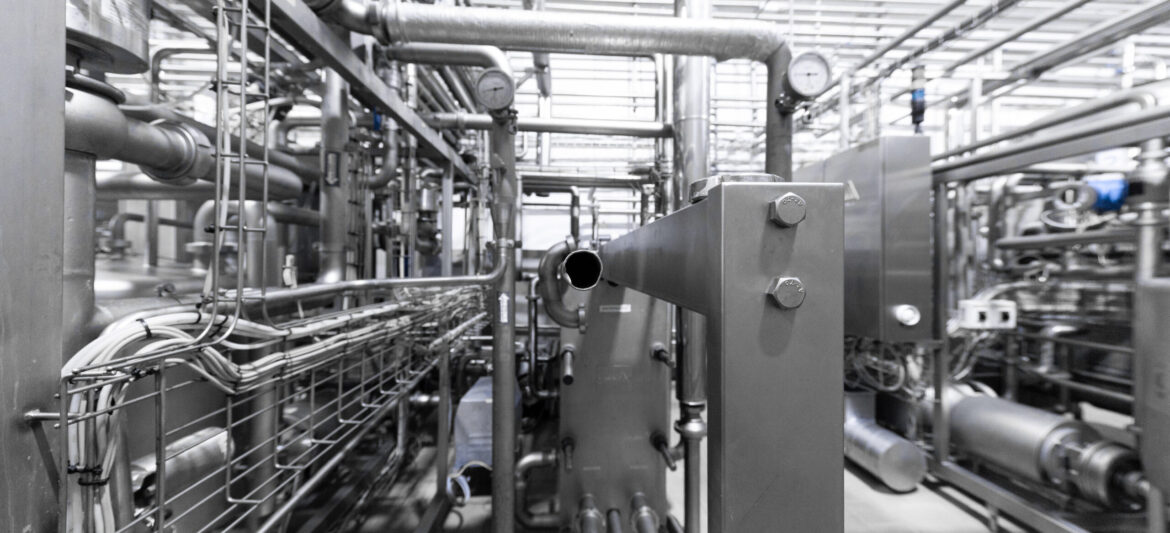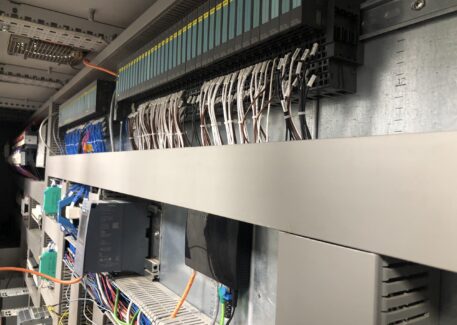
MILK PROCESSING
Project Desciption
We provided comprehensive programming, installation, and commissioning services specifically tailored for milk pasteurizer factory. Our expertise in process engineering and automation allows us to ensure the efficient and reliable operation of your milk pasteurization processes.
Project Starting Date05.08.2019
Project End01.09.2020
CategorMilk pasteurizer plant automation programming, installation and commissioning
Milk Process
The milk pasteurization process is a critical step in ensuring the safety and quality of milk products. It involves heating the raw milk to a specific temperature and holding it at that temperature for a defined period of time. The primary objectives of milk pasteurization are to eliminate harmful bacteria and extend the shelf life of the milk while preserving its nutritional value. Here is a general overview of the milk pasteurization process:
- Raw Milk Reception: The raw milk is received from dairy farms and transported to the milk processing facility. It undergoes initial quality checks and is stored in appropriate storage tanks.
- Preheating: The raw milk is preheated to remove any cold spots and ensure uniform temperature distribution before entering the pasteurization process.
- Pasteurization: The preheated milk is pumped into the pasteurization unit, where it is heated to a specific temperature, typically between 70-75°C (158-167°F), for a specific time period. The most common method of pasteurization is the High-Temperature Short-Time (HTST) method, where the milk is rapidly heated and held at the desired temperature for approximately 15-20 seconds.
- Cooling: After the required holding time, the pasteurized milk is rapidly cooled to a lower temperature to prevent any further bacterial growth. The cooling process can be achieved through heat exchangers or cooling systems.
- Packaging and Storage: The pasteurized milk is then packaged into containers, such as bottles or cartons, and sealed to maintain its freshness and hygiene. The packaged milk is stored in temperature-controlled environments to maintain its quality and extend its shelf life.
It’s important to note that milk pasteurization processes may vary based on specific regulations, product types, and industry standards. Different pasteurization methods, such as Ultra-High Temperature (UHT) pasteurization or Extended Shelf Life (ESL) pasteurization, may be employed for specific milk products.
Additionally, rigorous quality control measures and hygienic practices are followed throughout the entire milk pasteurization process to ensure the safety and quality of the final product. This includes regular testing, monitoring, and compliance with relevant food safety regulations and standards.
AYPROTECH provides expertise in programming, installation, and commissioning of milk pasteurization systems to ensure efficient and reliable operation while meeting industry standards and regulations.

Work Scope
- SCADA & PLC Programing (WinCC, TiaPortal)
- Automation Installation
- SAT & Commissioning
- Operator Training and Handover
